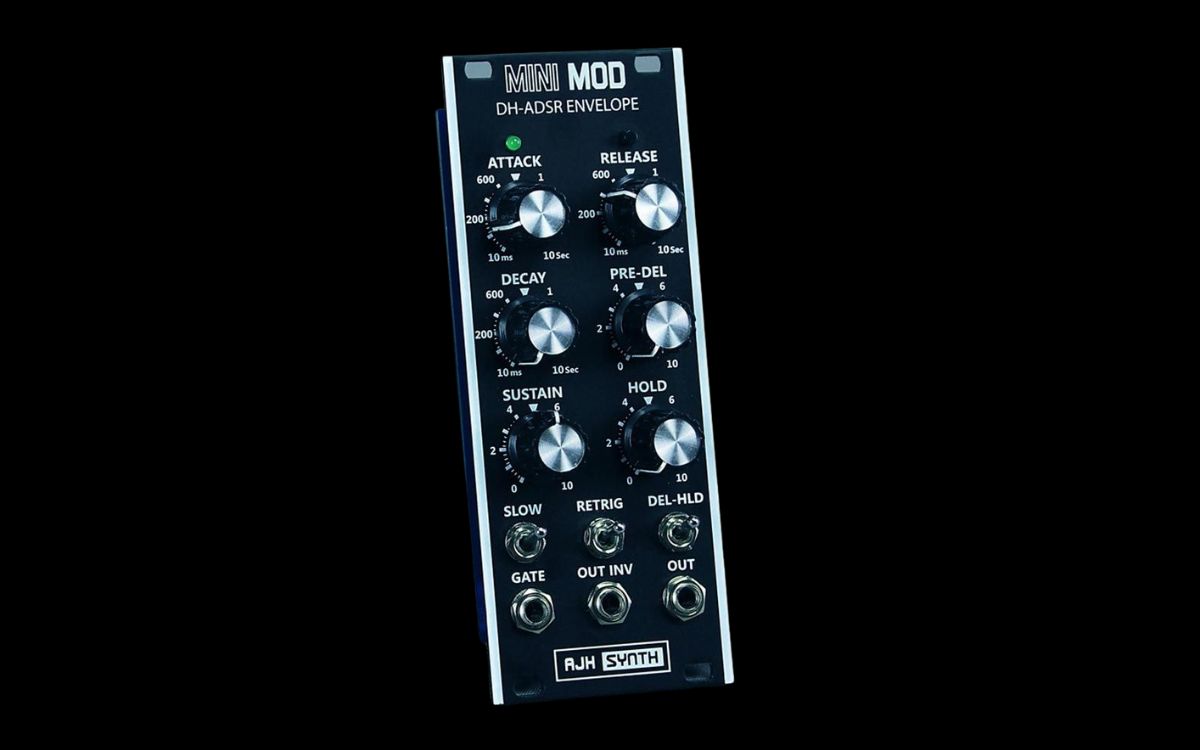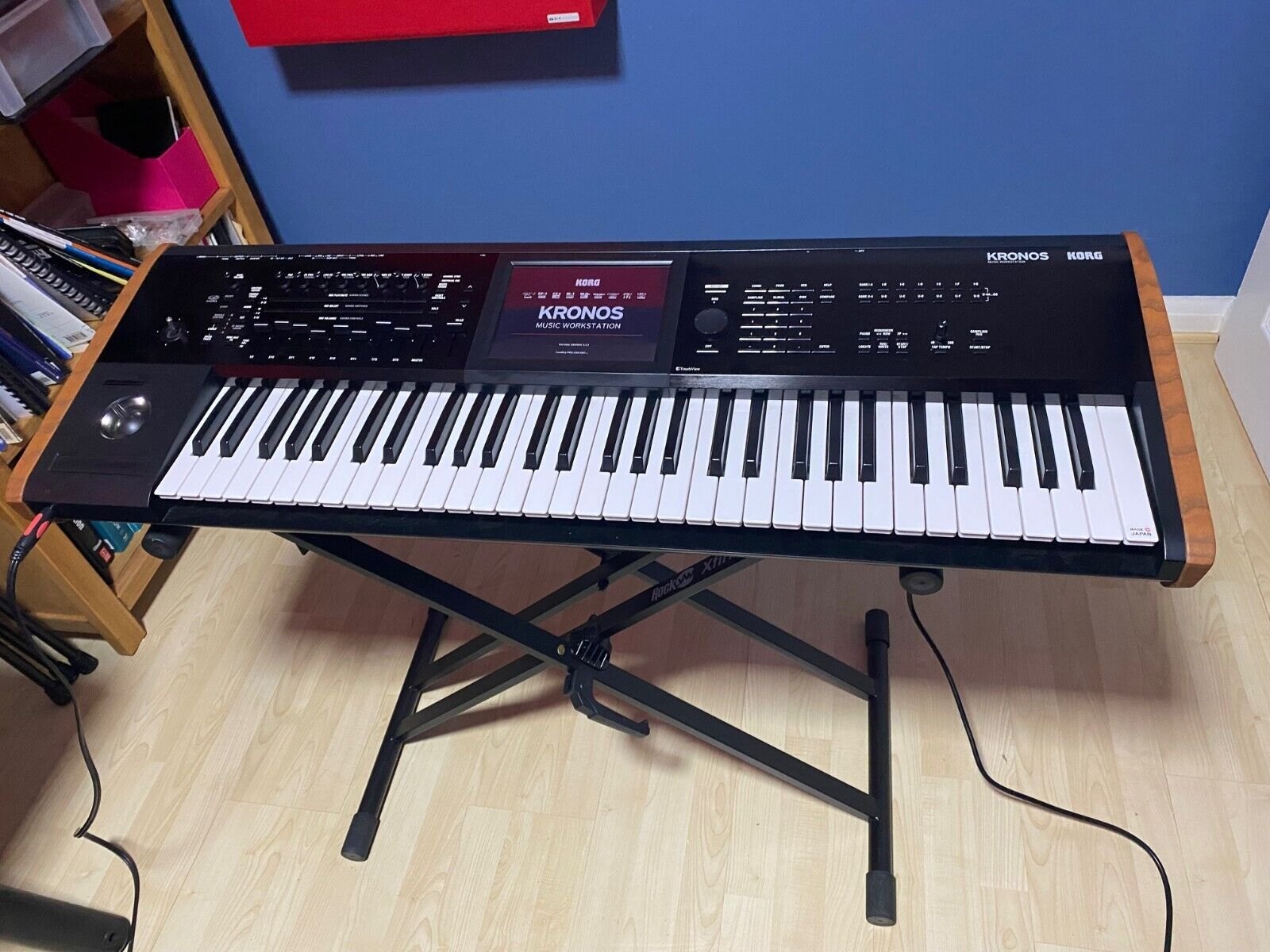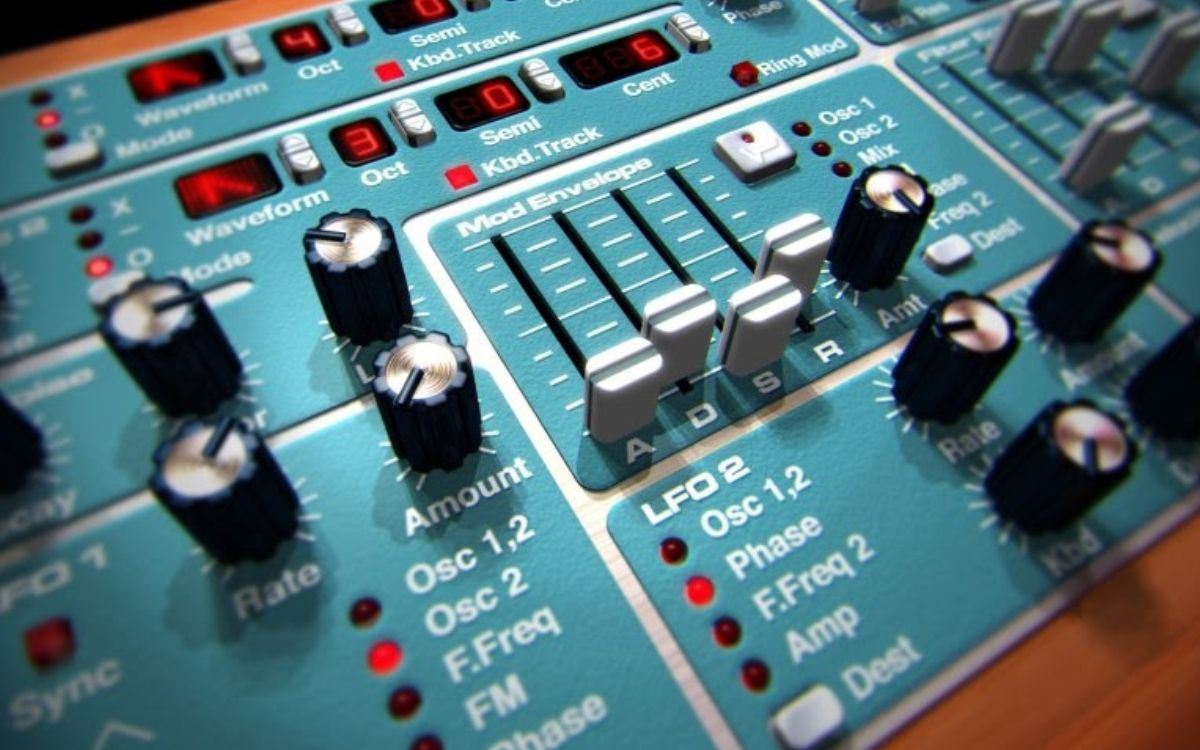Home>Instruments>Synthesizer>How To Make A Polyphonic Synthesizer Monophonic


Synthesizer
How To Make A Polyphonic Synthesizer Monophonic
Published: December 11, 2023
Learn how to convert a polyphonic synthesizer into a monophonic one with our step-by-step guide. Unlock new creative possibilities with your synthesizer!
(Many of the links in this article redirect to a specific reviewed product. Your purchase of these products through affiliate links helps to generate commission for AudioLover.com, at no extra cost. Learn more)
Table of Contents
Introduction
Welcome to the world of synthesizers, where creativity knows no bounds. Synthesizers have been a staple in music production for decades, allowing musicians to create an infinite range of sounds and melodies. Among the different types of synthesizers available, polyphonic and monophonic synthesizers offer distinct features and capabilities.
While polyphonic synthesizers allow for multiple notes to be played simultaneously, monophonic synthesizers are limited to playing only one note at a time. Both types have their own unique qualities and can be used to great effect in various musical genres and styles.
However, there may be times when you want to convert your polyphonic synthesizer into a monophonic one. Perhaps you want to achieve a specific sound or emulate the vintage analog synths of the past. Whatever your reason may be, this article will guide you through several methods to make a polyphonic synthesizer monophonic.
Understanding the Difference Between Polyphonic and Monophonic Synthesizers
Before we dive into the methods of making a polyphonic synthesizer monophonic, let’s first understand the fundamental differences between these two types of synthesizers.
A polyphonic synthesizer is capable of playing multiple notes simultaneously, allowing for the creation of chords and complex harmonies. It typically has multiple oscillators, envelopes, and filters that can be assigned to different voices or notes. This makes polyphonic synthesizers ideal for playing melodies and harmonies in a wide range of musical genres.
On the other hand, a monophonic synthesizer can only play one note at a time. It has a single oscillator, envelope, and filter, which gives it a unique and focused sound. Monophonic synthesizers are often associated with classic analog synths and are favored for their ability to create powerful lead sounds and basslines.
The decision to choose between a polyphonic or monophonic synthesizer depends on the specific needs of your music production. If you’re looking to create complex arrangements and lush soundscapes, a polyphonic synthesizer would be your go-to choice. However, if you’re aiming to create driving basslines, mesmerizing lead melodies, or vintage-inspired sounds, a monophonic synthesizer will be your best bet.
Now that we have a clear understanding of the differences between these two types of synthesizers, let’s explore the reasons why you might want to make your polyphonic synthesizer monophonic.
Reasons for Making a Polyphonic Synthesizer Monophonic
While polyphonic synthesizers excel in creating rich chords and intricate harmonies, there are several reasons why you might want to convert your polyphonic synthesizer into a monophonic one:
- Focusing on Lead Parts: By making your polyphonic synthesizer monophonic, you can prioritize and accentuate the lead melodies in your compositions. Monophonic synthesizers have a distinct character that allows lead parts to cut through the mix and grab the listener’s attention.
- Emulating Vintage Analog Synths: Many classic analog synthesizers from the past were monophonic. If you’re aiming to recreate the sounds and textures of these iconic synths, converting your polyphonic synthesizer to monophonic will help you achieve that nostalgic and vintage vibe.
- Creating Unique Soundscapes: Monophonic synthesizers have a certain rawness and purity that can be harnessed to create unique and unconventional soundscapes. By limiting yourself to a single note at a time, you can experiment with complex modulation and sequencing techniques to sculpt captivating sonic textures.
- Enhancing Synth Performance: Converting your polyphonic synthesizer to monophonic can free up system resources and increase the overall performance of your synthesizer. This can be particularly beneficial when using resource-intensive virtual instruments or plugins in a live performance or studio recording setting.
- Exploring Sound Design Possibilities: Monophonic synthesis allows you to delve deeper into sound design techniques and explore the intricacies of creating compelling timbres. By focusing on a single voice, you can experiment with different modulation sources, filters, and envelopes, resulting in more adventurous and unique sound design outcomes.
Now that you’re aware of the reasons for making a polyphonic synthesizer monophonic, let’s explore the various methods you can use to achieve this transformation.
Method 1: Disabling the Oscillators
If you want to convert your polyphonic synthesizer into a monophonic one, one method is to disable the oscillators. The oscillators are responsible for generating the sounds in a synthesizer, and by disabling them, you can limit the synthesizer to playing only one note at a time.
Here are the steps to follow:
- Locate the oscillator section of your synthesizer. This can typically be found in the sound generation or voice section of the synthesizer’s control panel.
- Identify the controls or settings that allow you to turn off or mute the oscillators individually or collectively.
- Disable all but one oscillator. This will ensure that only one note can be played at a time.
- Adjust the settings of the remaining oscillator to achieve the desired sound. Experiment with different waveforms, tuning, and modulation options to create a captivating monophonic sound.
This method works well for synthesizers that have individual control over each oscillator. However, some synthesizers may not have the option to disable individual oscillators, especially if they are designed primarily for polyphonic playability. In such cases, you may need to explore other methods to make your synthesizer monophonic.
Remember to consult your synthesizer’s manual or documentation for specific instructions on how to disable the oscillators, as the process may vary depending on the make and model of your synthesizer.
Now that you know how to disable the oscillators, let’s explore another method to make your polyphonic synthesizer monophonic.
Method 2: Restricting the Voices
Another method to convert a polyphonic synthesizer into a monophonic one is by restricting the voices. Voices refer to the number of simultaneous notes that can be played on a synthesizer. By limiting the number of voices to one, you essentially create a monophonic playing capability.
Here’s how you can restrict the voices on your synthesizer:
- Access the voice settings or polyphony parameters on your synthesizer. These settings determine how many voices can be played simultaneously.
- Set the maximum number of voices to one. This will ensure that only one note can be played at a time.
- Adjust any other voice-related settings such as voice stealing algorithms or voice priority to suit your preferences.
- Experiment with the envelope, filter, and modulation settings to shape the character and behavior of the monophonic sound.
Restricting the voices is a common method used by synthesizer enthusiasts and performers who want to transform their polyphonic synthesizers into monophonic instruments. By limiting the number of voices, you can achieve tighter control over the sound and focus on creating expressive lead melodies and basslines.
Keep in mind that some synthesizers may have a fixed number of voices, and may not offer the option to restrict or adjust the polyphony. In such cases, you can explore other methods to achieve a monophonic result.
Now that you’re familiar with the second method, let’s move on to explore another technique to make a polyphonic synthesizer monophonic.
Method 3: Modifying the Circuitry
If you’re comfortable with electronics and have a good understanding of synthesizer circuitry, modifying the circuitry of your polyphonic synthesizer can be an effective method to make it monophonic. This method requires technical knowledge and skill, so proceed with caution and at your own risk.
Here are the steps involved in modifying the circuitry of your synthesizer:
- Identify the components in the synthesizer that are responsible for generating and controlling the polyphony, such as voice allocation circuitry.
- Study the schematics and documentation of your synthesizer to understand how the polyphonic voices are managed.
- Make the necessary modifications to disable the polyphonic functionality. This might involve removing or bypassing certain components or rewiring connections.
- Test the modified synthesizer to ensure it operates as a monophonic instrument.
- Adjust and fine-tune any parameters or settings to achieve the desired monophonic sound and performance.
Modifying the circuitry of a synthesizer requires advanced knowledge and skills in electronics and should only be attempted by experienced individuals. If you’re not confident in your ability to safely perform these modifications, it’s best to seek the assistance of a professional technician or avoid this method altogether.
Additionally, it’s important to note that modifying the circuitry of a synthesizer may void any warranties and could potentially damage the instrument if not done correctly. Take proper precautions and consult the manufacturer’s guidelines before proceeding with any modifications.
Now that you’re familiar with the circuitry modification method, let’s explore another technique to make your polyphonic synthesizer monophonic.
Method 4: Using External Devices
If modifying the internal circuitry of your synthesizer seems too complex or risky, you can achieve monophonic functionality by utilizing external devices in conjunction with your polyphonic synthesizer. This method allows you to expand the capabilities of your synthesizer without making any permanent modifications.
Here’s how you can use external devices to make your polyphonic synthesizer monophonic:
- Connect a MIDI or CV/Gate sequencer to your synthesizer. This device will control the playback of notes and ensure that only one note is triggered at a time.
- Configure the sequencer to play a single note per step. This will enforce monophonic playback and restrict the number of simultaneous voices.
- Set the sequencer’s gate length to ensure that each note has a precise duration and does not overlap with other notes.
- Experiment with the sequencing patterns, tempo, and modulation options to create dynamic and expressive monophonic compositions.
By using an external sequencer, you can have precise control over the monophonic playback of your synthesizer without making any internal modifications. This method also opens up additional creative possibilities, allowing you to experiment with intricate sequences and rhythmic patterns.
In addition to sequencers, you can also explore the use of external MIDI controllers or performance devices that offer monophonic playing capabilities. These devices can be connected to your polyphonic synthesizer, giving you greater control over the monophonic aspects of your sound.
Remember to consult the documentation and user manuals of your external devices and synthesizer to ensure proper connectivity and compatibility.
Now that you’re familiar with the external devices method, let’s conclude our exploration.
Conclusion
Converting a polyphonic synthesizer into a monophonic one can open up a world of new sonic possibilities and creative opportunities. Whether you’re looking to focus on lead melodies, emulate vintage analog synths, or explore unique soundscapes, there are several methods to achieve this transformation.
We discussed four methods to make your polyphonic synthesizer monophonic:
- Disabling the oscillators
- Restricting the voices
- Modifying the circuitry
- Using external devices
Each method has its own advantages and considerations. Disabling the oscillators and restricting the voices are straightforward approaches that can be accomplished within the settings of your synthesizer. Modifying the circuitry requires a deeper technical understanding and should only be attempted by experienced individuals. Utilizing external devices allows for monophonic functionality without permanently altering your synthesizer.
Remember, always refer to the documentation and user manuals of your specific synthesizer to ensure you’re following the correct instructions for implementing these methods.
Choose the method that aligns with your skillset, goals, and comfort level. Whether you’re a synth enthusiast, musician, or sound designer, transforming your polyphonic synthesizer into a monophonic instrument can provide you with newfound creative possibilities and unique sonic textures.
So go ahead, experiment with these methods, and let your monophonic synthesizer take your musical journeys to new heights!











